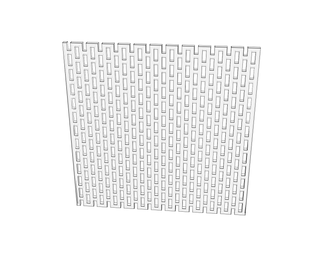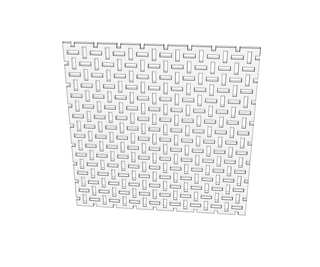Introduction: Thermoextensible 3D Printed Structures: Capabilities and Applications
Thermoextensible structures are a class of 2D or 3D structure that can be fabricated in a "collapsed" state from a thermoplastic and then heated past the glass transition point of the constituent material to deploy or extend the structure to occupy more area or volume than the original structure.
I developed these structures and this workflow largely through my work with ultra-low cost 3D printed prosthetics in the the e-NABLE community. While there is a huge amount of excitement surrounding digital means of fitting prosthetics and orthotics using 3D scanning, there are few accessible tools or workflows for to properly size and modify geometry appropriately (besides the lack of a discussion that such work is really a 4D-6D scanning challenge). In the interest of a more scalable and analog approach, in late 2013 I began exploring thermoforming 3D printed PLA structures to create custom-fit prosthetic elements. This work in turn led to my work with mesostructures, the principles of which I now apply to thermoforming to create deployable and structurally rigid mesostructures with interesting synclastic and auxetic behavior at temperatures above 60C.
In this instructable, I will discuss the principles behind the design of 3D printed PLA thermoextensible structures, their properties, and their applications.
Step 1: A Study of Four Thermoextensible Structures
These simple studies explore four different unit cells that are tessellated in two dimensions to compose a sheet that can be easily 3D printed from PLA or cut from bulk sheet stock.
General Guidelines and Properties:
To maximize extensibility, unit cells and tessellation patterns should be selected to minimize the number of minimally-connected vertices in a unit cell. These factors can be varied directionally to create anisotropic properties, as in the unidirectional example above.
Rectilinear tessellation of square unit cells engages all members in tension when thermoformed and most deformation is derived from angular deformation around vertices and linear extension of constituent members.
Hexagonal tessellation of regular hexagons deforms slightly more due to the higher stresses in constituent members as a result of the lower edge-to-vertex ratio.
Rectilinear tessellation of polygons with an aspect ratio greater than 1 tends to yield significantly more deformation than polygons with aspect ratios of 1 and the anisotropy of the deformation is derived from this ratio.
Step 2: Applications and Future Work
Another way to look at thermoextensible structures is that they can change their effective surface area (ie, the amount of area a given amount of structured material can define). In the case of the bidirectionally-extensible structure deforming over a hemisphere, the region that assumes the profile of the hemisphere doubles in surface area from that of a circe (π r^2) to that of a hemisphere (2 π r^2).
This ability to assume complex curvature (synclasticity) makes these structures useful for adapting to the shape of regions of the body. In the case of e-NABLE thermomesh palms, the bidirectional thermoextensible mesh can be used to achieve a custom fit to a recipient's residual palm that yields a firm surface that conforms to the residual palm comfortably. However, the stiffness of the structure precludes grasping techniques that rely on compliance of and friction against the palm. The bidirectional structure may also have applications in splints, braces, and other orthotics and is a useful prototyping material in its own right.
Future Work:
The structures demonstrated here are basic homogenous 2D tessellations, leaving much room for exploration of inhomogeneous 2D and 3D structures, which open many possibilities for programmable topologies and properties. Additionally, many of these properties and principles can be rendered more dynamically with flexible materials.

















